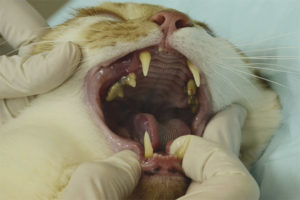The content of the article
Active cat owners may naturally want their beloved pet to accompany them on walks on the street. And if it’s quite natural for a dog to frolic on the grass and enjoy the sun, then the cat is quite careful and at first can resist walking and even run away. That is why the training of a pet for the street must begin with a leash.
Most cats when trying to use them with this ammunition fall on their side, dart under the bed and show hostility in every possible way. How to change the pet’s attitude to the leash and learn to walk?
Preparatory stage
The animal should have the most pleasant associations with walking on the street, so it will be advisable to reduce the risk of parasites (fleas, ticks, etc.) getting on its body and drip from them. Do not forget to vaccinate the cat against possible sores.
The next step is training for a collar. In it, for walking, the address capsule will be stored in case the animal runs away. You can start training kittens from 2-3 months of life. If the cat does not accept the collar, start with a regular ribbon or soft cloth that can be tied to the neck. When the pet gets used to it, replace it with the usual collar and make the animal feel comfortable.
The next stage is accustoming to a nylon harness and a leash (necessarily short to 1.5 meters). New things must be allowed to sniff at the cat (when she is in a good mood). On average, it takes 3-5 days to get used to the smell, texture and look. When the pet is comfortable, gently put on the harness, grab the animal in your arms and for 10 minutes actively praise it, give it all sorts of goodies, and then remove the ammunition. This stage also has up to 5 days. After that, let the animal explore the house in harness and fully get used to it. Do not forget to feed the cat in harness, give her a wash in her and even sleep. But do not allow playing with the device.
Training a cat to walk on a leash
On average, it takes up to 1 month to accustom to the harness even the most stubborn adult animals.
Now attach a leash carabiner to the harness and immediately distract the animal - pick it up and play, treat it with delicious food, comb the hair. After a couple of days, take your darling to another room, connect the leash and leave for the kitchen. Pour food there and call the cat. The natural desire to eat will overcome the discomfort, and your pet will come running, dragging the leash. Fix the procedure several times and you can start walking with the animal on a leash around the house. Correct routes using toys or goodies. When the pet turns in the right direction - treat and so on. Do not forget to praise.
The next stage is accustoming to walking on the street. Put the animal on a leash and make sure that it expresses its own desire to explore the world around it - to walk on the ground, smell or eat grass, etc. For the first time, you can keep your palms near the pet so that it feels protected. Ideally for the first walks, an area with tall grass is suitable, where a predator can hide from danger. Even if the animal will lie in one place in the grass for half an hour - do not interfere, do not pull the leash, let it get used to it.
After the first steps, begin to show the behavior that was at home: with the right choice of route - a treat. Communicate with a cat in a soft voice, praise, stroke, periodically pick up. As a rule, the development of street walking takes up to 1 week.
Practical tips
Problems you may encounter.
- The cat does not master the harness stage, licks wool under it, fusses. Most likely, a clean-looking animal just cares about the state of its fur coat, therefore, during the development of this stage, regularly comb your pet.
- The animal is trying to actively get rid of ammunition with the help of teeth and paws. The problem may be that its size is chosen incorrectly, the harness rubs and crushes, interferes with natural movements. Remember that under the collar and harness, 2 fingers should comfortably fit at any angle.
- The pet is scared. Perhaps on the ammunition (harness, leash, collar) there are sharp fittings, bells or other irritating factors.
- Wild panic when leaving the street, the animal tries to hide and even begins to scratch the owner when he tries to lower him to the ground. In this case, walks are out of the question. Perhaps the "ultimate dream" of your pet is a windowsill, on which you can safely study flying birds and insects.
Cats are very smart animals, so it’s easy to accustom even an adult to a leash and take 1-2 months on their strength. It is important at each stage to show patience and affection in relation to the pet.
Video: how to train a cat to a harness










Submit